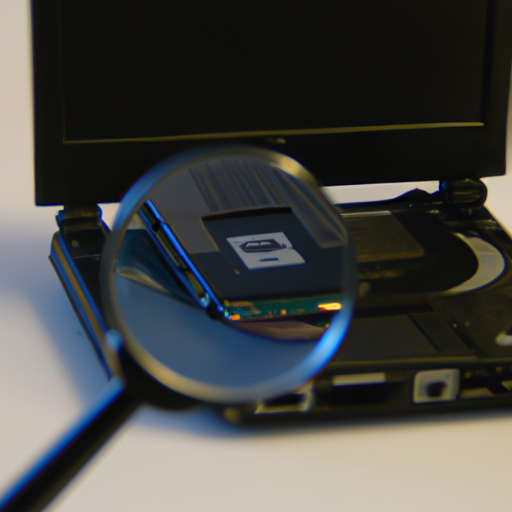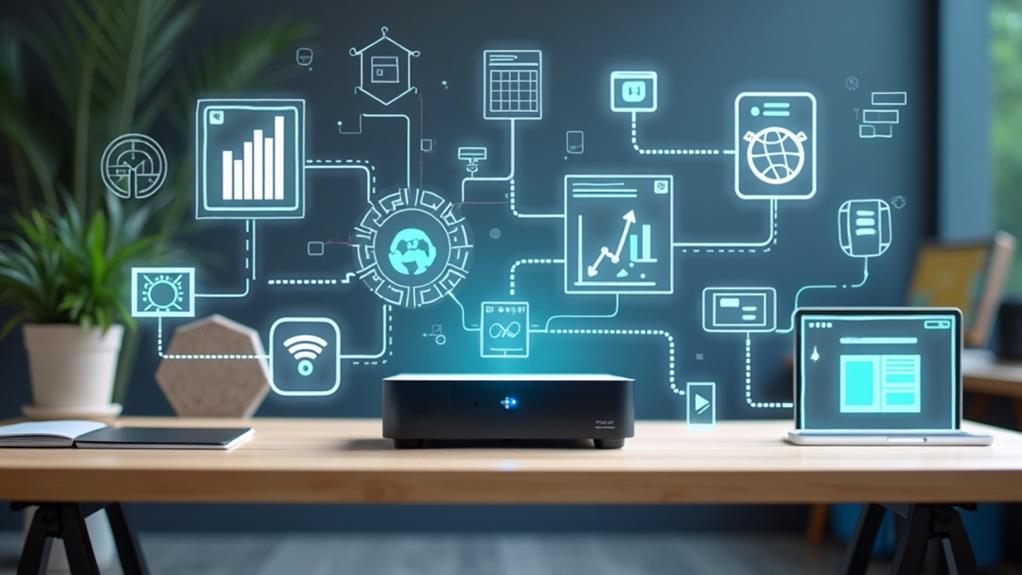



So you’ve just purchased a mini PC and are excited to start using it, but what do you do if you encounter any issues? Troubleshooting problems with a mini PC doesn’t have to be a daunting task. In this article, we will explore some tips and techniques to help you troubleshoot and resolve common issues that may arise with your mini PC. Whether it’s a performance problem, connectivity issue, or software glitch, we’ve got you covered. So sit back, relax, and let’s dive into the world of troubleshooting mini PCs!
Understanding Your Mini PC
Know your Mini PC’s specifications
To effectively troubleshoot and diagnose any issues with your mini PC, it is important to first have a clear understanding of its specifications. Familiarize yourself with the CPU, RAM, storage capacity, and any other relevant details about your device. This information will help you identify any hardware limitations or compatibility issues that may be causing problems.
Familiarize with the parts and functions of a Mini PC
Take the time to familiarize yourself with the different parts and functions of your mini PC. This includes understanding the ports, connectors, and buttons on your device. Knowing how to properly connect peripherals, such as monitors, keyboards, and mice, will help you troubleshoot any connectivity issues that may arise.
Understanding common issues of Mini PCs
Being aware of common issues that mini PCs may face can save you time and frustration when troubleshooting. Some common problems include overheating, software crashes, slow performance, network connection issues, and power-related problems. By knowing what to look out for, you can quickly identify the root cause of any issues and work towards finding a solution.
Diagnosing Mini PC Problems
Recognizing abnormal Mini PC behavior
To effectively diagnose any problems with your mini PC, you need to be able to recognize abnormal behavior. This may include frequent system crashes, lagging performance, unexpected shutdowns, or unresponsive peripherals. Pay close attention to any changes in your device’s behavior, as they can indicate underlying hardware or software issues.
Analyzing the problem’s symptoms
Once you’ve identified abnormal behavior, it’s important to analyze the symptoms and gather as much information as possible. Note down any error messages, specific actions that trigger the issue, and any patterns or trends you’ve observed. This will provide valuable information when seeking assistance or troubleshooting on your own.
Hairline system tests to diagnose the problem
Before diving into troubleshooting steps, it’s a good idea to run some basic system tests to diagnose the problem. Check hardware components such as the RAM, hard drive, and CPU for any issues. Running diagnostic software or accessing the device’s BIOS settings can also help identify potential problems. By conducting these tests, you can narrow down the possible causes and better target your troubleshooting efforts.
Troubleshooting Hardware Problems
Assessing physical damage
If your mini PC is experiencing hardware issues, the first step is to assess for any physical damage. Inspect the device for any visible signs of damage, such as loose connections, bent pins, or faulty components. If you notice any physical damage, it may be necessary to repair or replace the affected parts to resolve the problem.
Checking for hardware compatibility issues
Sometimes, hardware compatibility can be a culprit behind malfunctioning mini PCs. Ensure that all components, such as the RAM, hard drive, and peripherals, are compatible with your device. Be mindful of any firmware or driver updates that may be required for optimal compatibility. Incompatibilities can cause various issues, including system crashes, performance degradation, or even complete failure to boot.
Dealing with overheating problems
Overheating is a common problem with mini PCs due to their compact size and limited airflow. Check if the device’s cooling system, such as fans or heat sinks, is functioning properly and ensure that there’s no excessive dust accumulation. Consider using cooling pads or external fans to improve airflow. If overheating persists, it may be necessary to replace faulty cooling components or adjust the device’s operating temperature limits.
Evaluating keyboard and mouse issues
If your mini PC is experiencing keyboard or mouse problems, start by checking the connections. Ensure that they are securely plugged into the correct ports and try using different USB ports if available. If the issue persists, try connecting the peripherals to another device to determine if they are the root cause. Updating drivers or firmware for the keyboard or mouse might also resolve compatibility issues.
Addressing Software Related Issues
Checking for possible software corruption
Software corruption can manifest in various ways, such as system crashes, slow performance, or error messages. Perform thorough virus scans and use reliable software to detect and fix any corrupted files. Additionally, consider reinstalling or updating the operating system to ensure a clean and stable software environment.
Dealing with frequent system crashes
Frequent system crashes can be a frustrating problem, but there are several troubleshooting steps you can take. Start by checking for any recently-installed software or hardware changes that may have triggered the crashes. Update device drivers and ensure that all software is up to date. Running a memory test can also help identify if faulty RAM is causing the crashes.
Rectifying software compatibility issues
Software compatibility problems can arise when programs or applications are not designed to work with your mini PC’s operating system or hardware. Ensure that all software is compatible by checking system requirements and official compatibility lists. If compatibility issues persist, consider seeking software alternatives or reaching out to the software developers for support.
Updating Out-of-date software
Outdated software can often be the cause of various performance and functionality problems on your mini PC. Regularly check for software updates, both for the operating system and individual applications. Keeping your software up to date not only improves performance but also ensures security patches are applied, reducing the risk of system vulnerabilities.
Boot-Related Problems
Fixing boot failure
If your mini PC fails to boot, start by checking all cable connections, including power and display cables. Ensure that the power source is connected and working correctly. If the problem persists, try resetting the BIOS settings to default or updating the device’s firmware. In more severe cases, it may be necessary to reinstall the operating system.
Boot loop issues
A boot loop occurs when your mini PC continuously restarts without successfully booting into the operating system. To troubleshoot this issue, start by disconnecting any recently added hardware or peripherals. If that doesn’t resolve the problem, try booting into safe mode or accessing the recovery options specific to your operating system. From there, you can attempt system repairs or restore the device to a previous working state.
Slow boot times
If your mini PC takes a long time to boot, consider the number of startup programs and services that load during the boot process. Disable unnecessary startup items using the task manager or system configuration tools. Performing regular disk cleanup and defragmentation can also improve boot times by optimizing the device’s storage structure.
Dealing with Network Connection Problems
Connection failure
If you are experiencing complete network connection failure on your mini PC, first ensure that your network cables or Wi-Fi adapter are securely connected. Restart your router or modem and try connecting to the network again. Verify the network settings on your mini PC and confirm that they match your network’s configuration. If the issue persists, it may be helpful to contact your internet service provider for further assistance.
Slow internet speed
If your mini PC’s internet speed is significantly slower than expected, start by performing a speed test on another device to determine if it’s a broader network issue. Ensure that your mini PC is within range of the Wi-Fi router or connected via a stable Ethernet connection. Consider updating the network drivers and optimizing your network’s quality of service (QoS) settings to prioritize important traffic.
Intermittent or unstable network connection
If your mini PC’s network connection is intermittent or unstable, it may be caused by signal interference or network congestion. Try changing the wireless channel on your router to minimize interference from nearby devices. Moving the router to a more centralized location can also improve signal strength. If possible, connecting your mini PC to the network through an Ethernet cable can provide a more stable connection.
Troubleshooting WiFi and Bluetooth connectivity
If you are experiencing issues with your mini PC’s Wi-Fi or Bluetooth connectivity, start by updating the drivers for the network or Bluetooth adapter. Disable and re-enable the respective features to refresh their settings. If the problem persists, try forgetting the Wi-Fi network and reconnecting to it. Resetting the router or updating its firmware may also resolve connectivity issues.
Addressing Mini PC Performance Problems
Slow PC performance
If your mini PC is running slower than expected, there are several steps you can take to improve its performance. Check for any resource-intensive processes or programs running in the background and close them if necessary. Consider upgrading the RAM or storage capacity if they are near their limits. Running regular disk cleanup and removing unnecessary startup programs can also free up system resources.
Insufficient memory issues
Insufficient memory can severely impact your mini PC’s performance. If you frequently encounter “out of memory” errors or experience slowdowns when running multiple programs, upgrading your RAM may be necessary. Check your mini PC’s specifications and verify the maximum supported RAM capacity. Adding more RAM can significantly improve multitasking capabilities and overall system performance.
High CPU usage
High CPU usage can cause your mini PC to become sluggish and unresponsive. Use the Task Manager to identify any processes or programs that are consuming excessive CPU resources. Consider uninstalling or disabling resource-intensive applications and performing a malware scan to ensure that the high CPU usage is not due to malicious software. Updating your device’s drivers and performing regular maintenance can also help alleviate high CPU usage.
Dealing with freezing and hanging issues
Freezing or hanging issues can be frustrating, but there are steps you can take to address them. Start by ensuring that your mini PC is not overheating and that all components are functioning properly. Update device drivers and ensure that all software is up to date, as software conflicts can often cause freezing or hanging. Running a disk scan for errors and performing regular maintenance tasks can also help prevent these issues.
Solving Power Issues
Mini PC not turning on
If your mini PC is not turning on, check the power source and ensure all connections are secure. Try a different power outlet or power cable to rule out any issues with the power supply. If using a power strip or surge protector, confirm that it is powered on and functioning correctly. If all connections and power sources are working properly and the issue persists, it may be necessary to contact technical support or seek professional help.
Battery-related problems
Mini PCs that are battery-powered or feature an internal battery can encounter their own set of problems. If your mini PC is not holding a charge or not functioning correctly on battery power, ensure that the battery is properly installed and functional. Check the power settings in the operating system to confirm that there are no power-saving features enabled that could be affecting battery performance. If the issue persists, it may be necessary to replace the battery or contact the manufacturer for assistance.
Unexplained shutdowns or restarts
If your mini PC is experiencing sudden shutdowns or unexpected restarts, it can be indicative of power-related issues. Check the power settings in the operating system to ensure that there are no automatic shut down or restart triggers enabled. Inspect the hardware for any loose connections or signs of overheating. Consider running diagnostic tests on the power supply or seeking professional help if the issue persists.
Troubleshooting Audio and Video Problems
No sound output
If your mini PC is experiencing no sound output, start by checking the audio connections. Ensure that the speakers or headphones are properly connected and the volume is not muted or turned down. Update the audio drivers for your device and verify the audio settings in the operating system to ensure the correct playback device is selected. If the problem persists, troubleshooting the specific audio hardware or seeking professional help may be necessary.
Poor sound quality
If the sound quality on your mini PC is poor or distorted, consider checking the audio settings in the operating system. Adjusting the equalizer or audio enhancements may help improve the sound quality. If using external speakers, ensure they are positioned correctly and not obstructed. If the issue persists, updating audio drivers or testing different speakers or headphones could help identify the root cause.
Problems with display
When troubleshooting display issues on your mini PC, start by checking the connections between the device and the monitor. Ensure that the cables are securely plugged in and that the monitor is receiving power. Try using a different cable or monitor to rule out any hardware problems. Adjusting the display settings in the operating system, including resolution and refresh rate, can also help resolve display-related problems.
Video playback issues
If you encounter problems with video playback on your mini PC, make sure that you have the necessary codecs or video players installed. Update your video drivers to ensure compatibility with the latest video formats. Check the system’s resources to ensure that it has sufficient processing power and memory to handle video playback. Disabling any unnecessary background processes or programs can also help improve video playback performance.
Seeking Professional Help
When to seek help from professionals
While many mini PC problems can be resolved through troubleshooting, there may be instances when seeking professional help is necessary. If you are unable to identify the root cause of the issue or if the problem persists despite your troubleshooting efforts, it may be time to consult a professional technician. Additionally, if your mini PC is still under warranty, it is advisable to contact the manufacturer or authorized service center for assistance.
How to communicate the problem to tech support
When reaching out to tech support for help, it’s important to effectively communicate the problem you are experiencing. Start by providing a clear and concise description of the issue, including any error messages or system behaviors you have observed. Be prepared to answer any questions asked by the support representative and provide additional information or logs if requested. Effective communication will help ensure that tech support can better understand and address the problem.
Understanding warranty and service terms
Before seeking professional help for your mini PC, it’s crucial to understand the warranty and service terms provided by the manufacturer. Familiarize yourself with the warranty duration, any applicable terms and conditions, and any restrictions or limitations. Be aware of any costs that may be associated with repairs or services that fall outside the warranty coverage. Understanding the warranty and service terms will help manage expectations and make informed decisions regarding repairs or replacements.
Disclosure: As an Amazon Associate, I earn from qualifying purchases.







